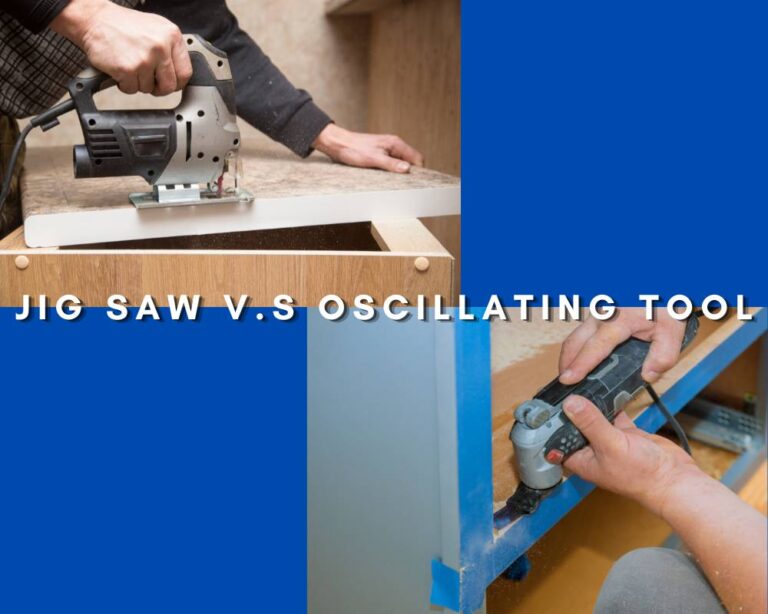Miter Saw vs. Table Saw: Which Is Best For Your DIY Building Projects?
When it comes to DIY building projects, selecting the right tools is crucial. The miter and table saw are two of the most popular power tools for DIY enthusiasts. Both are versatile and can be used for various projects, but which one is best for your needs? This article will explore the differences between the miter and table saw and help you determine which suits your DIY building projects.
The miter saw is a versatile tool designed to make precise angled cuts. It is ideal for cutting trim, moulding, and other materials that require precision. The table saw, on the other hand, is a powerful tool designed to make straight cuts through various materials. It is ideal for cutting large pieces of wood, such as plywood or lumber. While both tools are helpful, they each have their strengths and weaknesses. Understanding the differences lets you decide which is best for your DIY building projects.
Miter Saw vs Table Saw: Which One to Choose?
Choosing between a miter and a table saw can be tricky for DIY building projects. Both tools have their strengths and weaknesses, so it’s important to understand the capabilities of each before making a decision.
Overview
A miter saw is a specialized saw designed to make precise angled cuts. It is typically used for cutting trim and moulding but can also be used for other types of cuts. On the other hand, a table saw is versatile and can be used for a wide range of cuts, including ripping, crosscutting, and bevel cuts.
Pros and Cons
Miter Saw
Pros:
- Precise angled cuts: A miter saw is designed to make accurate angled cuts, making it perfect for cutting trim and moulding.
- Portability: Miter saws are typically smaller and more portable than table saws, making them easier to move around the job site.
- Safety: Miter saws are generally considered safer than table saws, as the blade is enclosed, and the saw is designed to keep your hands away from the blade.
Cons:
- Limited capabilities: Miter saws are designed for angled cuts, making them less versatile than table saws.
- Size limitations: Miter saws are typically limited in the material size they can cut, so they may not be suitable for larger projects.
Table Saw
Pros:
- Versatility: Table saws can have a wide range of cuts, including ripping, crosscutting, and bevel cuts.
- Power: Table saws are typically more powerful than miter saws, making them better suited for cutting thicker material.
- Larger capacity: Table saws are typically larger than miter saws to handle larger pieces of material.
Cons:
- Safety: Table saws can be dangerous if not used properly, as the blade is exposed and can cause serious injury.
- Size: Table saws are typically larger and heavier than miter saws, making them more challenging to move around the job site.
Conclusion
When it comes to choosing between a miter saw and a table saw, it ultimately comes down to the specific needs of your project. A miter saw is a way to go if you need precise angled cuts. A table saw is better if you need a more versatile saw that can handle a wide range of cuts.
Miter Saw
Regarding DIY building projects, a miter saw is a versatile tool that can make precise cuts at various angles. Let’s examine the different miter saws’ features, capabilities, accuracy, precision, and safety.
Types of Miter Saws
There are two main types of miter saws: sliding and compound. A sliding miter saw can slide forward and backward, allowing you to make wider cuts. On the other hand, a compound mitre saw can tilt and bevel, making it ideal for angling cuts.
Features and Capabilities
Miter saws have various features and capabilities that make your DIY building project easier. Positive stops, for example, allow you to quickly and accurately set the saw to standard angles. A miter gauge can help you make precise cuts at different angles. Some miter saws have a laser guide that lets you see where the blade will cut.
Accuracy and Precision
Accuracy and precision are crucial when it comes to DIY building projects. Miter saws are designed to make precise cuts, but the accuracy and precision can vary depending on the saw’s quality and features. Look for a miter saw with a blade diameter that can handle the thickness of the wood you’re working with.
Safety
Safety is always a top priority when using power tools. Miter saws have safety features like a blade guard and a dust collection system to keep you safe and reduce the amount of sawdust in the air. Always use a push stick to keep your hands away from the blade, and be aware of the risks associated with using a miter saw.
In summary, a miter saw is a versatile tool that can make precise cuts at various angles. When choosing a miter saw, consider the type of cuts you’ll be producing, its features and capabilities, its accuracy and precision, and its safety features.
Table Saw
Regarding DIY building projects, a table saw is essential to make your work easier and more efficient. This section will discuss the different table saw types, their features and capabilities, accuracy and precision, and safety measures to remember.
Types of Table Saws
Various table saws with features and capabilities are available in the market. Some of the most common types of table saws are:
- Cabinet table saws: These are heavy-duty saws designed for professional use. They have a large table, a powerful motor, and a sliding fence that can handle wider boards.
- Non-sliding table saws: These compact, portable saws are ideal for small woodworking projects. They are lightweight and easy to move around.
- Single-bevel table saws: These are designed for angled cuts and have a tilting blade that can be adjusted to make bevel cuts.
- Track saws: These saws are designed for precision cuts and have a guide rail that helps to keep the saw on track.
Features and Capabilities
Table saws have various features and capabilities that make them versatile and useful for various woodworking projects. Some of the features to look out for include:
- Rip fence: This guide helps keep the wood straight while making a rip cut.
- Dado blade: This special blade can make grooves or dado cuts in the wood.
- Positive stops: These pre-set angles help make accurate cuts quickly and easily.
- Miter gauge: This guide helps to make angled cuts on the wood.
Accuracy and Precision
Accuracy and precision are essential for woodworking projects, and a table saw can help you achieve both. You can easily make straight, angled, and bevel cuts with a table saw—the sliding fence and miter gauge help ensure the cuts are accurate and precise.
Safety
Safety is a crucial aspect of using a table saw. Always use a blade guard to protect your hands and eyes from the blade. Use a push stick to keep your hands away from the blade while making cuts. Ensure the saw is grounded properly and the dust collection system works correctly. Always follow the manufacturer’s instructions and guidelines to reduce the risk of injury.
In summary, a table saw is essential for any woodworking project. Its features and capabilities can help you make accurate and precise cuts quickly and easily. However, safety should always be a top priority when using a table saw.
Factors to Consider
When choosing between a miter, saw, and table saw for your DIY building projects, there are several factors to consider. Here are some of the most important ones:
Cost
Cost is a significant consideration when buying any tool, and miter and table saws are no exception. Miter saws are less expensive than table saws, but this can vary depending on the brand, model, and features. Remember that a higher-priced tool may offer more features, better quality, and durability.
Portability
If you need to move your saw around frequently, portability is an essential factor to consider. Miter saws are generally more portable than table saws, especially if you choose a smaller, lightweight model. However, some table saws are designed to be portable, with folding stands and wheels.
Space and Workshop Size
The size of your workshop and the available space will also affect your saw choice. Miter saws are generally smaller and take up less space than table saws, making them a good choice for smaller workshops. However, a table saw may be a better option if you have a larger workshop and need to cut larger pieces of wood.
Type of Work and Materials
The type of work you do and the materials you work with will also play a role in your choice of saw. Miter saws are great for cutting angles and making crosscuts, while table saws are better for ripping and making long, straight cuts. A table saw may be better if you work with many plywoods or other sheet goods. If you work with a lot of trim work or crown molding, a miter saw may be the better choice.
Safety
Safety is always a concern when working with power tools. Both miter saws and table saws can be dangerous if not used properly, but miter saws tend to be safer because they have smaller blades and are less likely to kick back. However, it’s essential to use proper safety equipment and follow all safety guidelines when using any power saw.
The choice between a miter saw, and a table saw depends on your specific needs and preferences. Consider the factors above carefully before making your decision.
Conclusion
In conclusion, both miter saws and table saws are valuable tools for DIY building projects. Each tool has its unique features and benefits. When it comes to choosing between the two, it ultimately depends on the specific needs of your project.
A mitre saw is a way to go if you need to make angled cuts or crosscuts. It’s also an excellent option for cutting, trim, and moulding. On the other hand, if you need to make rip cuts or cut large sheets of plywood, a table saw is the better choice. It’s also more versatile when cutting different types of materials.
It’s important to remember that both tools require proper safety precautions and be used carefully. Always wear appropriate safety gear and read the manufacturer’s instructions before use.
In the end, whether you choose a miter saw or a table saw, the most important thing is to have the right tool for the job. With the right tool and approach, you can build smarter, not harder, and achieve great results with your DIY building projects.




